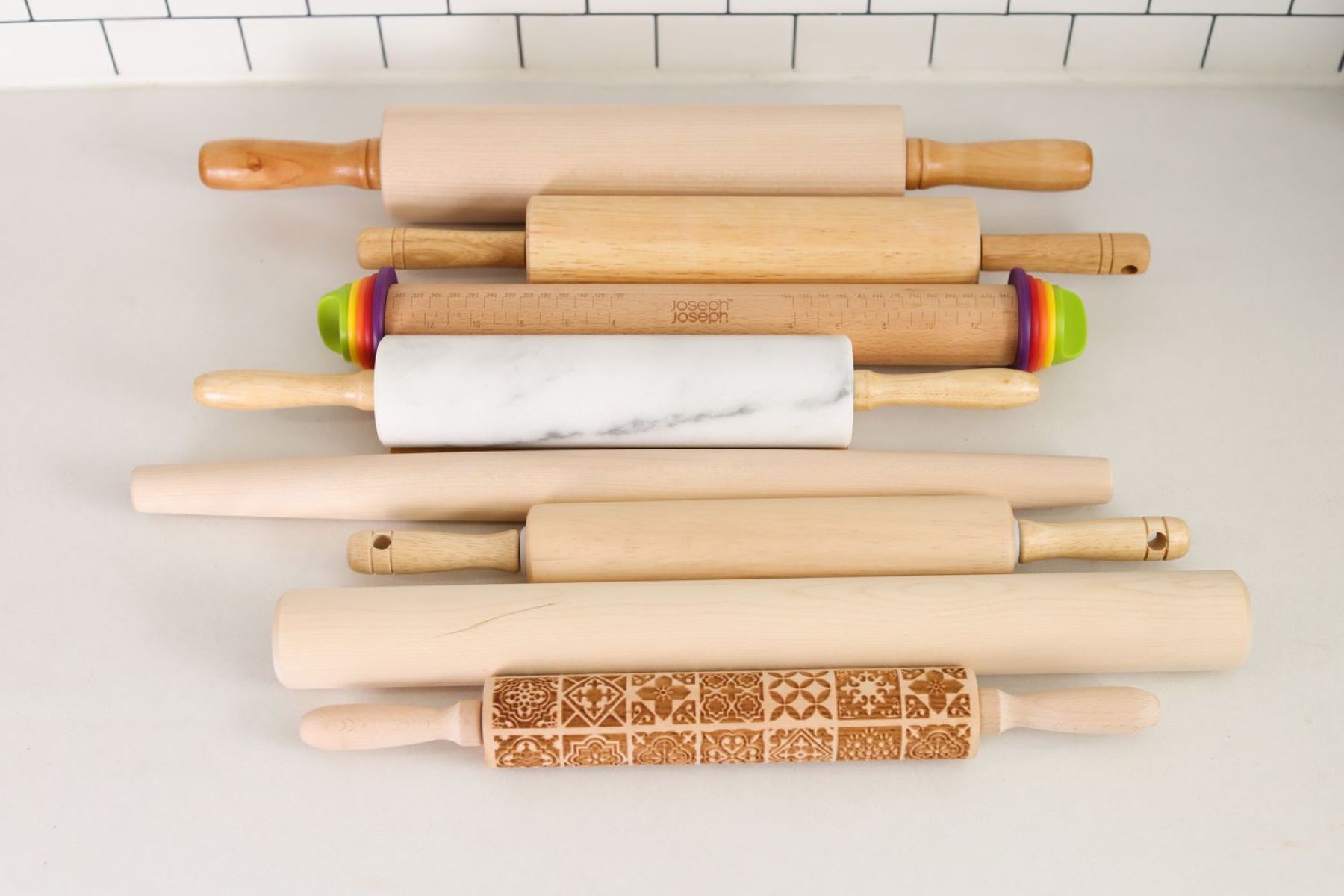

Articles
How To Store Rolling Pins
Modified: January 21, 2024
Learn the best techniques and tips on how to store rolling pins effectively. Read our articles to keep your rolling pins organized and in perfect condition.
(Many of the links in this article redirect to a specific reviewed product. Your purchase of these products through affiliate links helps to generate commission for Storables.com, at no extra cost. Learn more)
Introduction
Rolling pins are essential tools for bakers and cooking enthusiasts alike. They are used to flatten dough and pastry, ensuring a consistent thickness and even texture. However, when it comes to storing rolling pins, many people may overlook the importance of proper storage techniques. A well-maintained and appropriately stored rolling pin can last for years, ensuring its longevity and preserving its functionality.
Proper storage not only helps protect the rolling pin from damage, but it also keeps it easily accessible for future use. In this article, we will explore the reasons why proper storage of rolling pins is crucial and discuss different methods for storing them effectively.
Key Takeaways:
- Proper storage of rolling pins is crucial for maintaining their quality, cleanliness, accessibility, and safety, ensuring longevity and functionality while protecting them from damage and contaminants.
- Consider factors such as material, size, frequency of use, kitchen space, and protection when selecting the most suitable storage method for your rolling pins, ensuring they are well-preserved and ready for culinary creations.
Read more: How To Store Pins
Why Proper Storage of Rolling Pins is Important
Proper storage of rolling pins is important for several reasons. Firstly, it helps maintain the quality and longevity of the rolling pin. Rolling pins are often made from materials such as wood, marble, or stainless steel. These materials can be susceptible to damage if not stored correctly. For example, wooden rolling pins can warp or crack if exposed to moisture or extreme temperatures. Marble rolling pins can chip or break if not handled with care. By storing the rolling pins properly, you can minimize the risk of damage and ensure their durability.
Secondly, proper storage helps to keep the rolling pins clean and hygienic. When not in use, rolling pins can collect dust, grease, and food particles. Storing them in a suitable place, away from other kitchen utensils and food products, helps to prevent cross-contamination. It also makes cleaning the rolling pins before use much easier.
Furthermore, proper storage of rolling pins enhances accessibility and organization in the kitchen. Searching for a misplaced rolling pin can be frustrating and time-consuming. By having designated storage for your rolling pins, you can always find them quickly when you need them. This saves you valuable time and energy, especially during the bustling moments of meal preparation or baking.
Lastly, proper storage of rolling pins helps prevent accidents and injuries. A rolling pin that is improperly stored could accidentally fall and cause harm to you or others in the kitchen. By ensuring the rolling pins are stored securely and safely, you can minimize the risk of accidents and promote a safer cooking environment.
In summary, proper storage of rolling pins is essential to maintain their quality, cleanliness, accessibility, and safety. Now that we understand the significance of proper storage, let’s explore some factors to consider before storing rolling pins and different methods for storing them effectively.
Factors to Consider Before Storing Rolling Pins
Before storing your rolling pins, there are several factors to consider to ensure their preservation and accessibility.
Material: Different rolling pins are made from various materials, such as wood, marble, or stainless steel. Each material requires specific care and storage methods. Wood rolling pins should be stored away from moisture and extreme temperatures to prevent warping or cracking. Marble rolling pins are more delicate and should be handled with care to avoid chipping or breaking. Stainless steel rolling pins are generally more durable and can withstand a wider range of storage conditions.
Size and Shape: Rolling pins come in different sizes and shapes. Consider the dimensions of your rolling pin when choosing a storage method. Verify that the storage option you select can accommodate the length and diameter of your rolling pin comfortably.
Frequency of Use: If you frequently use your rolling pin, convenience and accessibility become crucial factors in storage. Opt for a storage solution that keeps the rolling pin easily accessible and within reach while also protecting it from damage.
Kitchen Space: Assess the available space in your kitchen before deciding on a storage method. If you have limited countertop or drawer space, you may need to explore alternative options such as wall-mounted storage or cabinet storage.
Protection and Hygiene: Consider the need to protect your rolling pin from dust, grease, and other contaminants. Storage options that offer covers or enclosed spaces can help maintain the cleanliness and hygiene of your rolling pin.
By taking these factors into account, you can choose the appropriate storage method that suits your needs and ensures the longevity and accessibility of your rolling pins.
Different Methods for Storing Rolling Pins
When it comes to storing rolling pins, there are various methods to choose from depending on your preferences, kitchen layout, and the available space. Let’s explore some of the most common and effective methods for storing rolling pins:
- Hanging Storage: Hanging your rolling pins on hooks or pegs is a popular option that saves space and keeps them easily accessible. You can install hooks on the wall, on the inside of cabinet doors, or even on the side of a kitchen cart. Make sure the hooks are sturdy enough to support the weight of the rolling pins.
- Drawer Storage: Storing rolling pins in a kitchen drawer is a convenient and space-saving option. Place a soft grip liner on the bottom of the drawer to protect the rolling pins and prevent them from rolling around. You can organize the rolling pins either vertically or horizontally, depending on the size of your drawer.
- Rolling Pin Racks or Holders: Rolling pin racks or holders are specifically designed to store and display rolling pins. These stands or racks usually have slots or compartments that hold the rolling pins upright, keeping them organized and within reach. They can be placed on countertops, shelves, or inside cabinets.
- Wall-Mounted Storage: If you have limited counter or drawer space, consider wall-mounted storage options. You can install floating shelves or dedicated rolling pin racks on the walls of your kitchen. This not only provides a functional storage solution but can also add a decorative element to your kitchen decor.
- Cabinet or Shelf Storage: Utilizing cabinets or shelves in your kitchen is a practical method for storing rolling pins. You can allocate a specific area within a cabinet or on a shelf to keep your rolling pins organized and protected. Consider using dividers or bins to separate each rolling pin, preventing them from bumping into each other.
- Rolling Pin Storage Bags or Cases: If you want extra protection for your rolling pins, consider investing in storage bags or cases specifically designed for rolling pins. These bags are often padded and have compartments to store multiple rolling pins. They are great for transport as well if you often take your rolling pins outside the kitchen.
Choose the storage method that best suits your kitchen layout, the number of rolling pins you have, and your personal preferences to ensure easy access, protection, and organization of your rolling pins.
Option 1: Hanging Storage
Hanging storage is a popular and space-efficient method for storing rolling pins in the kitchen. It keeps the rolling pins easily accessible while also adding a decorative touch to your kitchen decor. Here’s how you can incorporate hanging storage for your rolling pins:
- Choose the Right Hooks: Select hooks that are sturdy and capable of supporting the weight of your rolling pins. Screw-in hooks or removable adhesive hooks are both viable options. Make sure the hooks are securely attached to the wall or the inside of a cabinet door.
- Determine the Location: Decide where you want to hang your rolling pins. Consider a spot that is easily accessible and won’t obstruct your movement in the kitchen. You can choose to hang them on an empty wall, the side of a cabinet, or the inside of a pantry door.
- Measure and Space the Hooks: Depending on the size and number of rolling pins you have, measure the distance between each hook. This spacing will ensure that the rolling pins hang without touching each other, preventing any potential damage.
- Hang the Rolling Pins: Attach the hooks to the chosen location at the measured distances. Hang the rolling pins by inserting the handles onto the hooks. Ensure that the rolling pins are securely in place and won’t accidentally fall off.
- Consider Decorative Elements: To enhance the aesthetic appeal, you can consider adding decorative elements such as a small shelf or hooks with decorative designs. This will not only provide functionality but also add visual interest to the hanging storage display.
Hanging storage ensures that your rolling pins are readily available when you need them, saving you time and effort during meal preparation or baking. It also keeps the rolling pins off the counter, freeing up workspace and reducing clutter in the kitchen. Additionally, hanging the rolling pins allows for better air circulation around them, which can prevent moisture buildup and keep them in optimal condition.
Remember to handle the rolling pins with care when removing them from the hooks to avoid any accidental damage. Hanging storage is a practical and visually appealing storage option that can transform your kitchen and make your rolling pins a functional and decorative element in the space.
Read more: How To Store Pins Collection
Option 2: Drawer Storage
Drawer storage is a convenient and space-saving method for storing rolling pins in the kitchen. It keeps the rolling pins organized, protected, and easily accessible whenever you need them. Follow these steps to efficiently store your rolling pins in a kitchen drawer:
- Clean and Prepare the Drawer: Begin by emptying out the drawer and giving it a thorough cleaning. Remove any debris or crumbs, and wipe down the drawer with a damp cloth. This will ensure a clean and sanitary storage space for your rolling pins.
- Choose a Soft Grip Liner: To prevent the rolling pins from rolling around and potentially getting damaged, use a soft grip liner on the bottom of the drawer. Cut the liner to fit the size of the drawer, ensuring a secure and cushioned surface for the rolling pins.
- Organize the Rolling Pins: Depending on the size and number of rolling pins you have, you can choose to store them vertically or horizontally. If storing vertically, you can either place them with the handles facing up or down, whichever is more convenient for you. This helps save space in the drawer while keeping the rolling pins easily accessible.
- Separate and Divide: Use dividers or small bins within the drawer to separate each rolling pin. This will prevent the rolling pins from rubbing against each other and getting scratched or damaged. Additionally, it helps keep the rolling pins organized and easily distinguishable when you need to select a specific one.
- Label or Color Code: If you have multiple rolling pins of different sizes or materials, consider labeling or color-coding them. This will make it easier to identify the rolling pin you need at a glance and save you time during meal preparation or baking.
Drawer storage is an efficient method for keeping your rolling pins within reach while also protecting them from dust and other kitchen contaminants. It helps declutter your countertop and keeps your kitchen organized. Plus, the rolling pins are easily accessible whenever you need them, making your baking or cooking process more seamless and enjoyable.
Remember to handle the rolling pins with care when removing them from the drawer to avoid any accidental damage. With proper drawer storage, you can efficiently utilize your kitchen space while keeping your rolling pins in excellent condition.
Store rolling pins in a vertical position to prevent warping. Keep them in a dry, cool place to maintain their shape and quality. Avoid storing them in humid or hot areas.
Option 3: Rolling Pin Racks or Holders
Rolling pin racks or holders are specifically designed to store and display rolling pins in a neat and organized manner. These dedicated storage solutions not only keep your rolling pins easily accessible but also add a decorative element to your kitchen decor. Here’s how you can utilize rolling pin racks or holders for your storage needs:
- Select the Right Rack or Holder: There are various types and designs of rolling pin racks or holders available in the market. Choose one that suits your style preferences and can accommodate the number of rolling pins you have. Consider racks or holders with slots or compartments that securely hold the rolling pins.
- Determine the Location: Decide where you want to place the rolling pin rack or holder in your kitchen. It could be on the countertop, a shelf, or even a dedicated rolling pin display area. Ensure that the location is easily accessible and won’t be in the way of your regular kitchen activities.
- Organize the Rolling Pins: Insert the rolling pins into the slots or compartments of the rack or holder. Arrange them in a way that is visually pleasing and allows for easy identification of each rolling pin. You can choose to organize them by size, material, or frequency of use.
- Consider Additional Features: Some rolling pin racks or holders come with additional features such as covers or lids. These can help protect the rolling pins from dust or other kitchen contaminants when not in use. They also help maintain the cleanliness and hygiene of your rolling pins.
- Showcase Decoratively: Rolling pin racks or holders can serve as decorative elements in your kitchen. Consider placing them in a prominent location and arranging the rolling pins in an aesthetically pleasing way. You can even add decorative elements such as ribbons or greenery to enhance the visual appeal.
Rolling pin racks or holders not only provide a functional storage solution but also add a charming touch to your kitchen decor. They keep your rolling pins organized, accessible, and well-protected when not in use. Additionally, having a dedicated space for your rolling pins showcases your collection and adds a personalized touch to your cooking space.
Remember to handle the rolling pins with care when removing them from the rack or holder to avoid any accidental damage. With a rolling pin rack or holder, you can proudly display your collection of rolling pins and effortlessly access them whenever you need to roll out dough or pastry.
Option 4: Wall-Mounted Storage
If you have limited countertop or drawer space, wall-mounted storage is an excellent option for storing your rolling pins. It not only saves space but also adds a unique and decorative element to your kitchen. Here’s how you can utilize wall-mounted storage for your rolling pins:
- Select the Location: Choose a suitable wall in your kitchen where you want to mount the storage. It could be a blank wall, the side of a cabinet, or even the inside of a pantry door. Make sure the location is easily accessible and won’t obstruct your movement in the kitchen.
- Install a Floating Shelf: Install a floating shelf on the chosen wall. Ensure that it is securely mounted and can withstand the weight of your rolling pins. Choose a shelf size that can accommodate the length and diameter of your rolling pins comfortably.
- Arrange the Rolling Pins: Place the rolling pins on the floating shelf in a way that is visually pleasing and allows for easy access. You can arrange them vertically with the handles facing up or down, depending on your preference. Leave enough space between each rolling pin to prevent any potential damage or collision.
- Consider Decorative Elements: To enhance the aesthetic appeal, consider adding decorative elements to the wall-mounted storage. You can incorporate a small plant or a decorative backdrop behind the rolling pins. This will add visual interest and make your rolling pin storage a standout feature in your kitchen.
- Use Hooks or Clips: If you prefer a more secure storage option, you can attach hooks or clips to the lower side of the floating shelf. This will ensure that the rolling pins stay in place and prevent any accidental falling. Make sure the hooks or clips are sturdy enough to support the weight of the rolling pins.
Wall-mounted storage allows you to utilize vertical space and keep your rolling pins easily accessible. It adds a decorative and functional element to your kitchen while saving valuable countertop or drawer space. Additionally, having your rolling pins on display can be a wonderful conversation starter during gatherings or when family and friends visit your kitchen.
Remember to handle the rolling pins with care when removing them from the wall-mounted storage to avoid any accidental damage. With wall-mounted storage, you can efficiently store your rolling pins while adding a stylish and organized touch to your kitchen decor.
Option 5: Cabinet or Shelf Storage
If you prefer a more concealed storage option for your rolling pins, utilizing cabinets or shelves in your kitchen is a practical and organized method. It keeps your rolling pins protected from dust and other contaminants while ensuring easy accessibility whenever you need them. Here’s how you can utilize cabinet or shelf storage for your rolling pins:
- Select a Suitable Cabinet or Shelf: Choose a cabinet or shelf in your kitchen where you want to store your rolling pins. It could be a dedicated baking cabinet, a pantry shelf, or even a hutch. Ensure that the space can accommodate the length and diameter of your rolling pins and has enough room for easy retrieval.
- Clean and Prepare the Storage Area: Before placing the rolling pins in the cabinet or on the shelf, clean and prepare the storage area. Remove any items or debris that may interfere with storing the rolling pins. Wipe down the area to ensure it is clean and organized.
- Organize the Rolling Pins: Determine how you want to organize your rolling pins within the cabinet or on the shelf. You can store them vertically or horizontally, depending on the available space and the number of rolling pins you have. Consider using dividers or bins to separate each rolling pin and prevent them from bumping into each other.
- Label or Color-Code: If you have multiple types or sizes of rolling pins, consider labeling or color-coding them for easy identification. This will save you time when selecting the appropriate rolling pin for your baking or cooking needs.
- Utilize Adjustable Shelves: If your cabinet or shelf offers adjustable shelves, take advantage of this feature to customize the storage space to fit your rolling pins. Adjust the shelves to accommodate the height of your rolling pins, ensuring a secure and organized storage area.
Cabinet or shelf storage keeps your rolling pins neatly organized and protected from dust and other contaminants. It also makes efficient use of the available kitchen space while maintaining easy accessibility when you need to use the rolling pins.
Remember to handle the rolling pins with care when taking them out from the cabinet or shelf to prevent any accidental damage. With proper cabinet or shelf storage, your rolling pins will be conveniently stored, allowing you to focus on your baking or cooking endeavors without any clutter or unnecessary challenges.
Read more: How To Store Disney Pins
Option 6: Rolling Pin Storage Bags or Cases
If you want an additional layer of protection for your rolling pins, utilizing storage bags or cases specifically designed for rolling pins is an excellent option. These bags or cases not only keep your rolling pins secure but also make it convenient to transport them. Here’s how you can utilize rolling pin storage bags or cases:
- Select the Right Storage Bag or Case: Choose a storage bag or case that is specifically designed for rolling pins. Look for options that provide adequate padding and protection to prevent any damage during storage or transport. Make sure the storage bag or case can accommodate the length and diameter of your rolling pins.
- Organize the Rolling Pins: Place the rolling pins inside the storage bag or case. Ensure that they are positioned in a way that minimizes movement and prevents any potential collisions. Some storage bags or cases have separate compartments to keep each rolling pin securely in place.
- Close and Secure the Bag or Case: Depending on the design of the storage bag or case, follow the provided instructions to properly close and secure it. This could involve zippers, buttons, or straps. Ensure that the bag or case is tightly closed to keep the rolling pins safely sealed inside.
- Label the Bag or Case: For easy identification, consider labeling the storage bag or case. You can attach a tag with the size or type of rolling pin or even use color-coded labels. This will help you quickly locate the desired rolling pin when you need it.
- Store or Transport the Bag or Case: Depending on your needs, you can store the bag or case in a safe and easily accessible location in your kitchen. Alternatively, if you frequently transport your rolling pins, the storage bag or case helps protect them during transport to baking classes, culinary events, or gatherings.
Rolling pin storage bags or cases provide an extra layer of protection for your rolling pins, preventing dust, scratches, or other damage. They also make it convenient to store or transport your rolling pins without worry. Additionally, storage bags or cases are especially useful if you have multiple rolling pins of different sizes or materials.
Remember to handle the rolling pins with care when removing them from the storage bag or case to avoid any accidental damage. With rolling pin storage bags or cases, you can ensure the longevity and safety of your rolling pins, no matter where you store or transport them.
Other Tips for Rolling Pin Storage
In addition to the various storage options mentioned earlier, here are some additional tips to consider for the optimal storage of your rolling pins:
- Clean Before Storage: Always clean your rolling pins thoroughly before storing them. Remove any dough residue or grease by wiping them with a damp cloth. Make sure they are completely dry, as moisture can lead to mold or warping.
- Avoid Extreme Temperatures: Be mindful of the storage location temperature. Extreme heat or cold can damage your rolling pins, especially those made of wood. Avoid storing them near heat sources such as stoves or dishwashers.
- Store Away from Moisture: Moisture can cause wooden rolling pins to warp or crack. To protect them, store the rolling pins in a dry area, away from sinks, steam, or humid environments.
- Avoid Direct Sunlight: Prolonged exposure to direct sunlight can fade or discolor the wood or other materials of your rolling pins. Opt for storage locations that are away from direct sunlight to preserve their appearance.
- Regularly Inspect: Periodically inspect your rolling pins for any signs of damage or wear. Look for cracks, dents, or loose handles. Address any issues immediately to prevent further damage and ensure the longevity of your rolling pins.
- Consider Vertical Storage: If you have limited storage space, vertical storage can save space and protect your rolling pins. Options like hanging storage or using a rolling pin rack vertically maximize vertical space utilization.
- Keep Away from Sharp Objects: When storing your rolling pins, make sure they are kept away from sharp utensils or objects that could cause scratches or damage.
- Store Wisely: Take into account the frequency with which you use your rolling pins when selecting a storage method. If you use them regularly, prioritize accessibility and convenience in your storage choice.
- Keep Original Packaging: If your rolling pins came with packaging or cases, consider keeping them for storage. The original packaging can provide additional protection and prevent any potential damage during storage.
By following these tips, you can ensure that your rolling pins are stored properly, kept in excellent condition, and easily accessible when needed. Proper storage will prolong their lifespan and allow you to continue enjoying the benefits of using high-quality rolling pins in your baking or cooking adventures!
Conclusion
Proper storage of rolling pins is vital for maintaining their quality, cleanliness, accessibility, and safety. Whether you prefer hanging storage, drawer storage, rolling pin racks or holders, wall-mounted storage, cabinet or shelf storage, or storage bags or cases, there are various options available to suit your needs and kitchen space. By considering factors such as material, size, frequency of use, kitchen space, and protection, you can select the most suitable storage method for your rolling pins.
By storing your rolling pins correctly, you can ensure their longevity and functionality, protecting them from damage, dust, and other contaminants. Proper storage also saves you time and energy, enabling quick and easy access when you need to use your rolling pins for baking or cooking.
Remember to handle your rolling pins with care during storage and whenever you use them to avoid any accidental damage. Regularly inspecting them for signs of wear or damage will help you address any issues promptly and maintain their quality over time.
Whether you are a professional baker or an occasional home cook, the right storage method for your rolling pins keeps them well-preserved and ready for your culinary creations. Choose a storage option that suits your kitchen layout, personal preferences, and the number of rolling pins you have.
In conclusion, proper storage of rolling pins is essential for their longevity, cleanliness, accessibility, and overall functionality. By following the tips and utilizing the various storage options outlined in this article, you can ensure that your rolling pins are well-maintained, protected, and easily accessible whenever you need them.
Now, take the time to evaluate your kitchen space and rolling pin collection, and choose the storage method that best fits your needs. With proper storage, you can enjoy the convenience and benefits of using your rolling pins for many years to come.
Frequently Asked Questions about How To Store Rolling Pins
Was this page helpful?
At Storables.com, we guarantee accurate and reliable information. Our content, validated by Expert Board Contributors, is crafted following stringent Editorial Policies. We're committed to providing you with well-researched, expert-backed insights for all your informational needs.
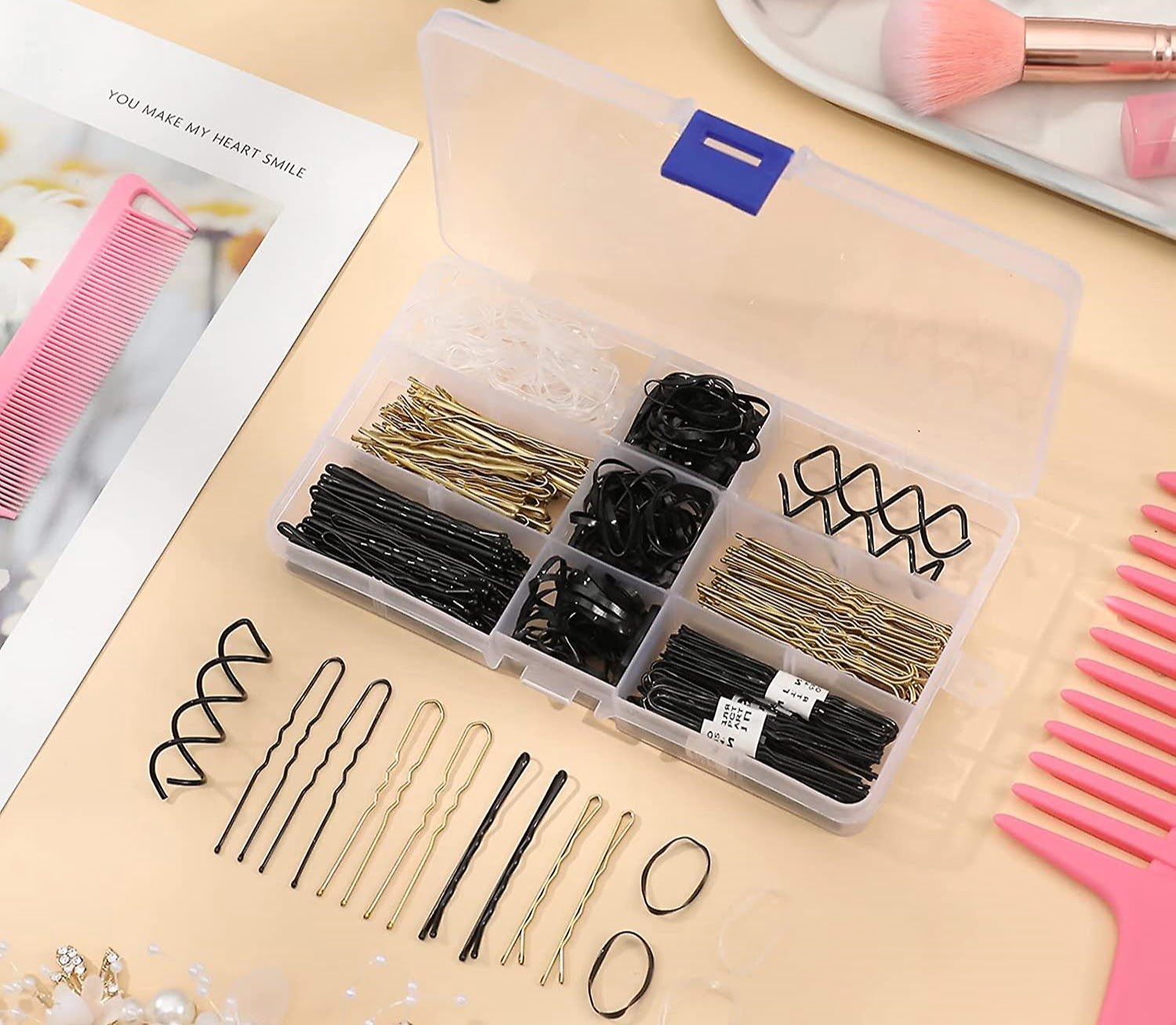

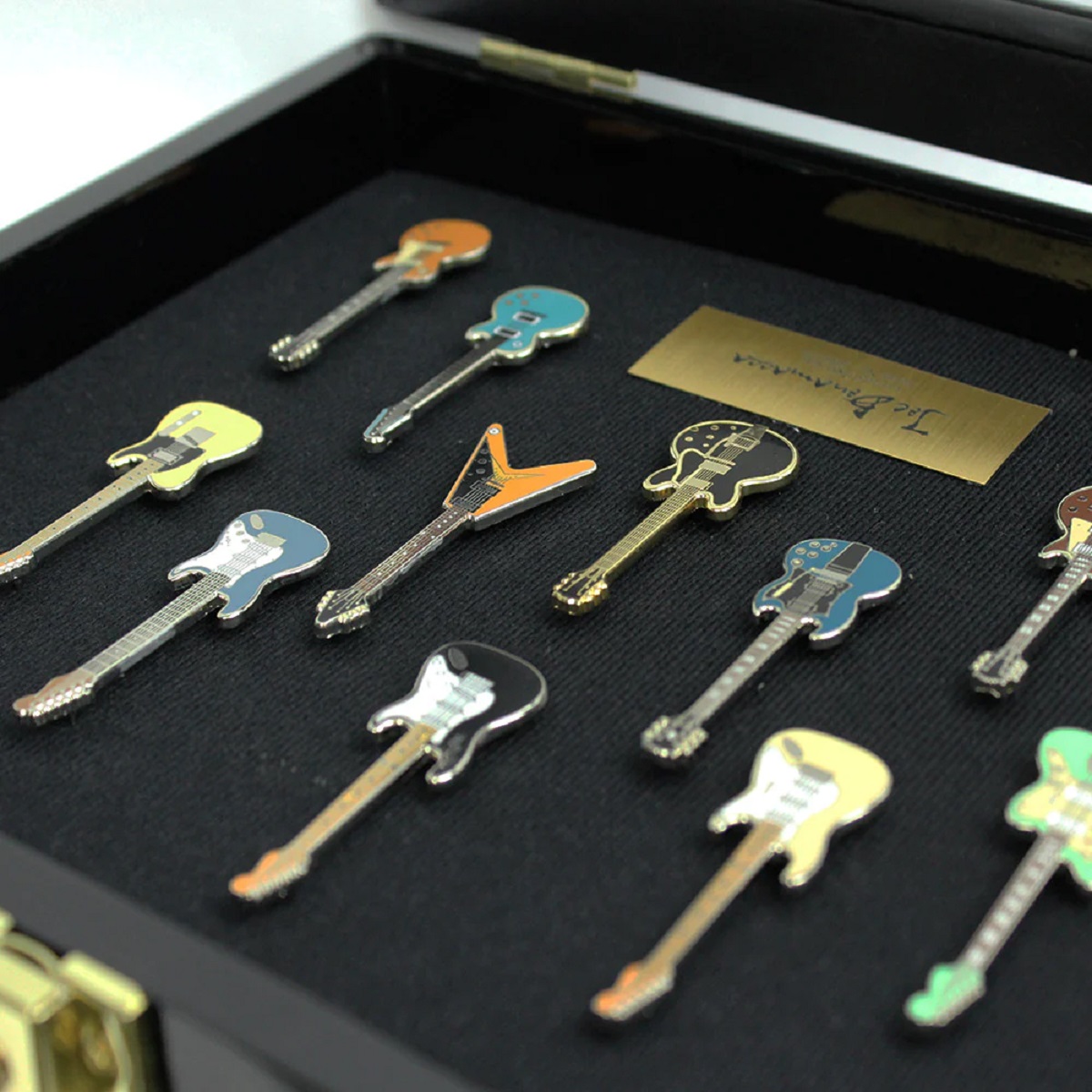

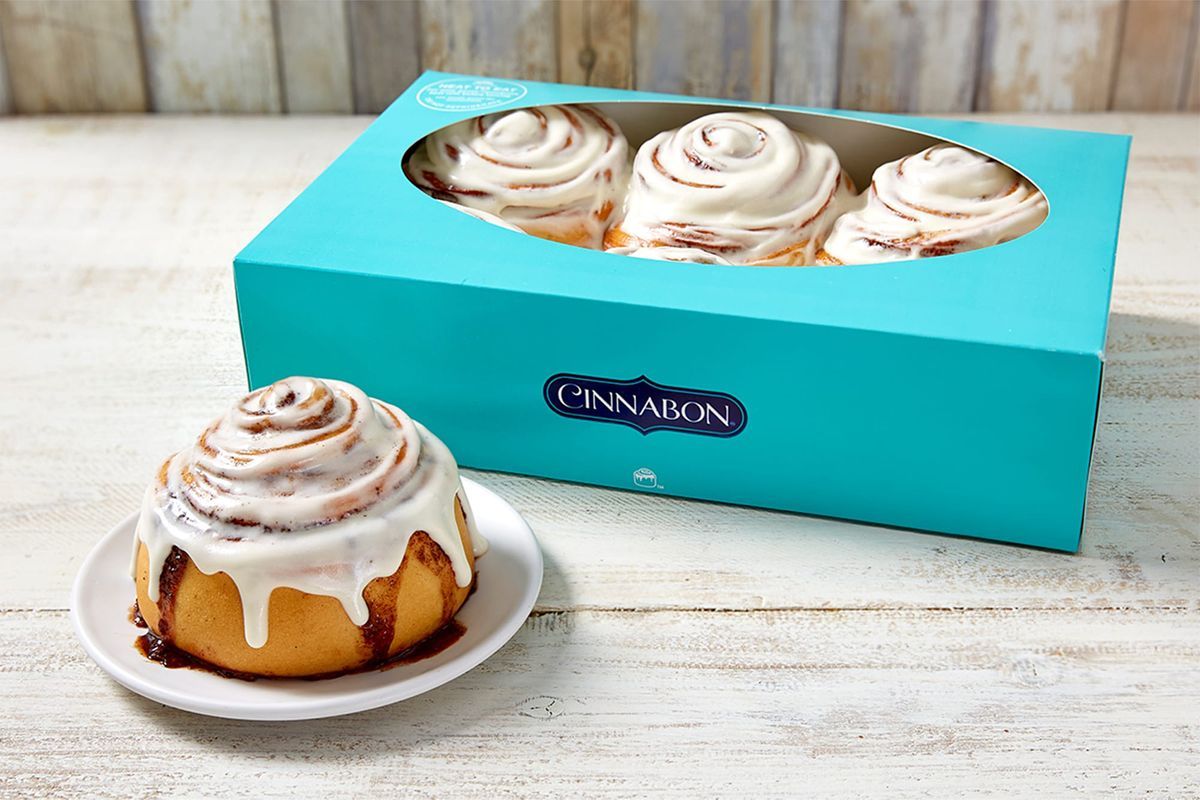
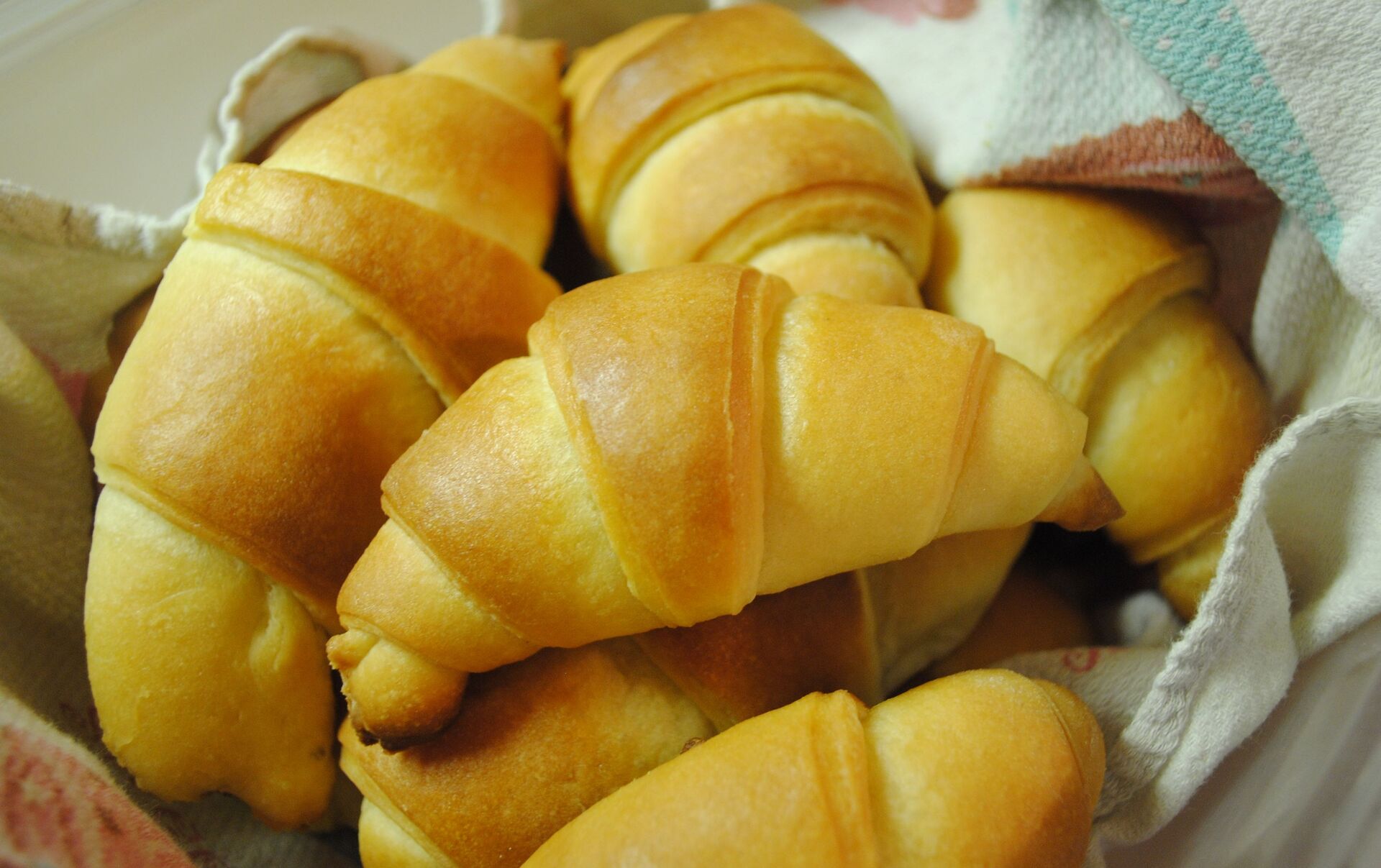
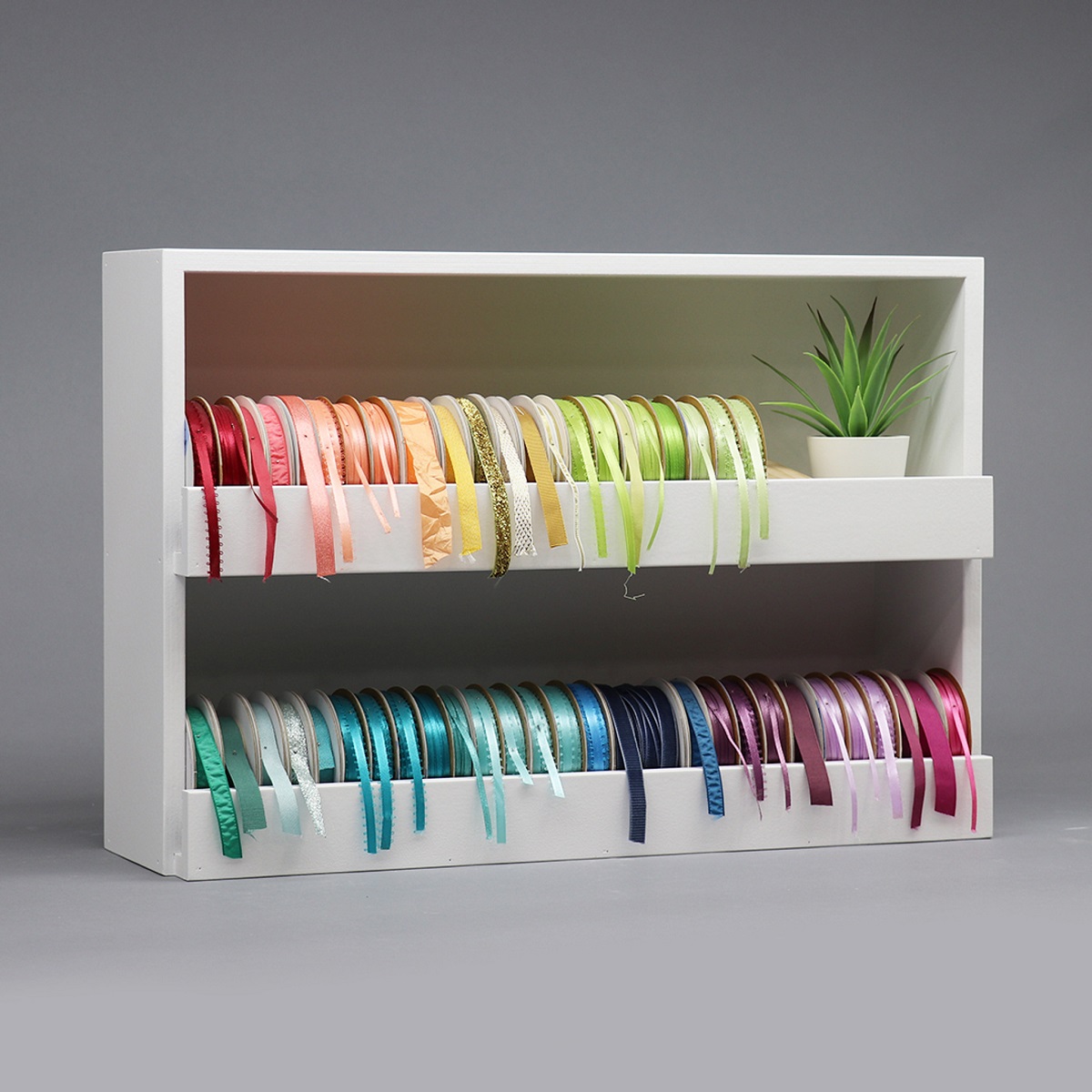




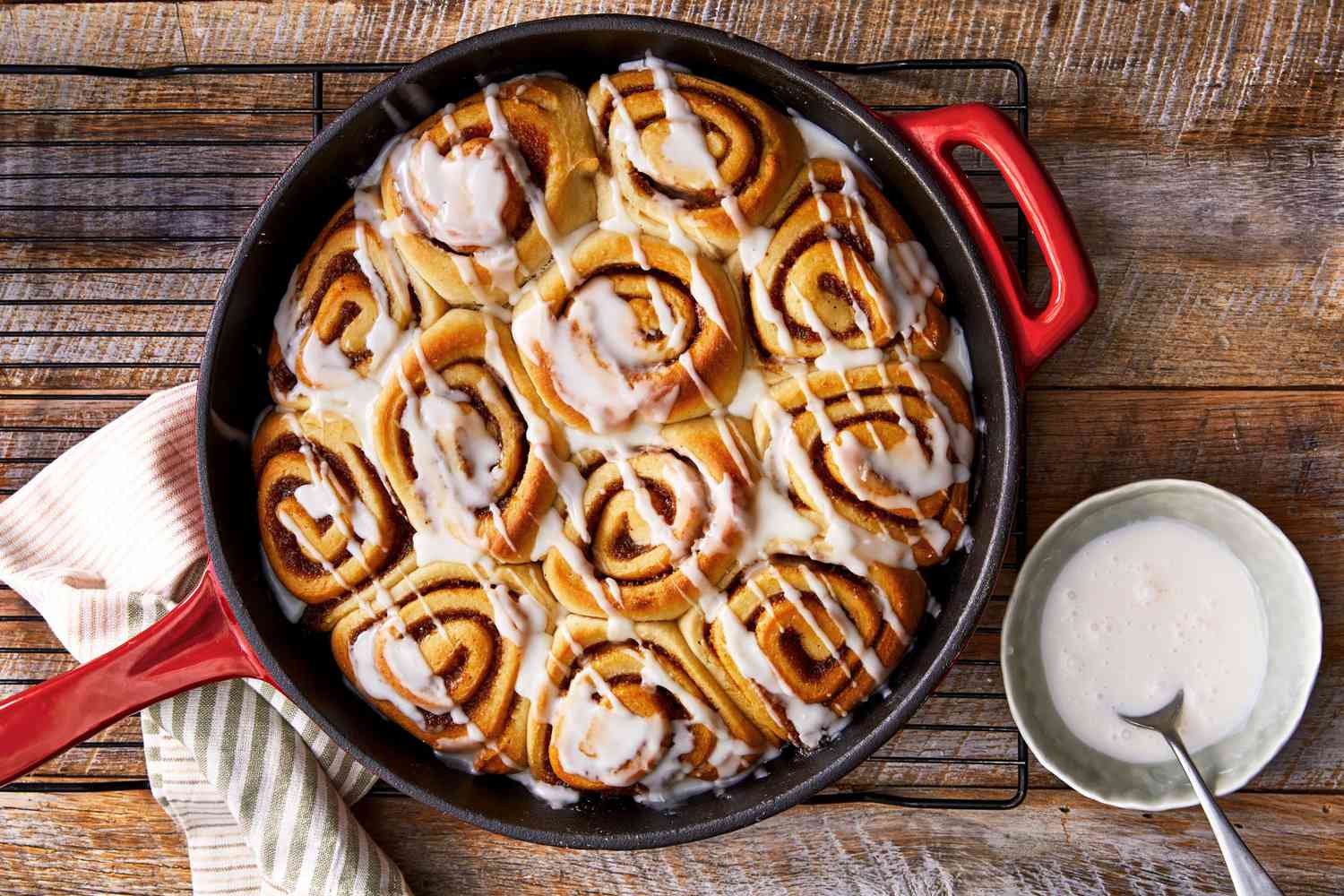
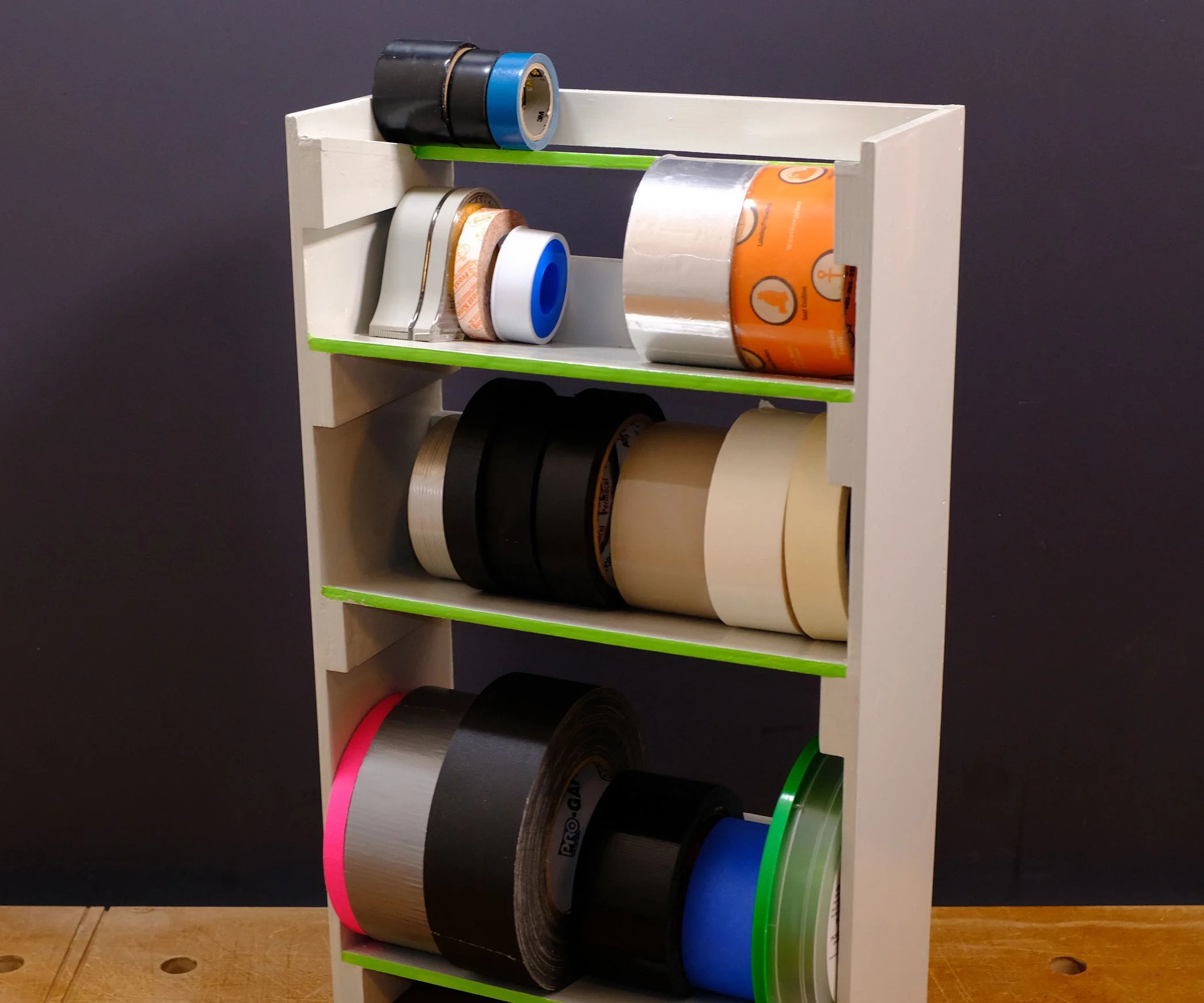

0 thoughts on “How To Store Rolling Pins”